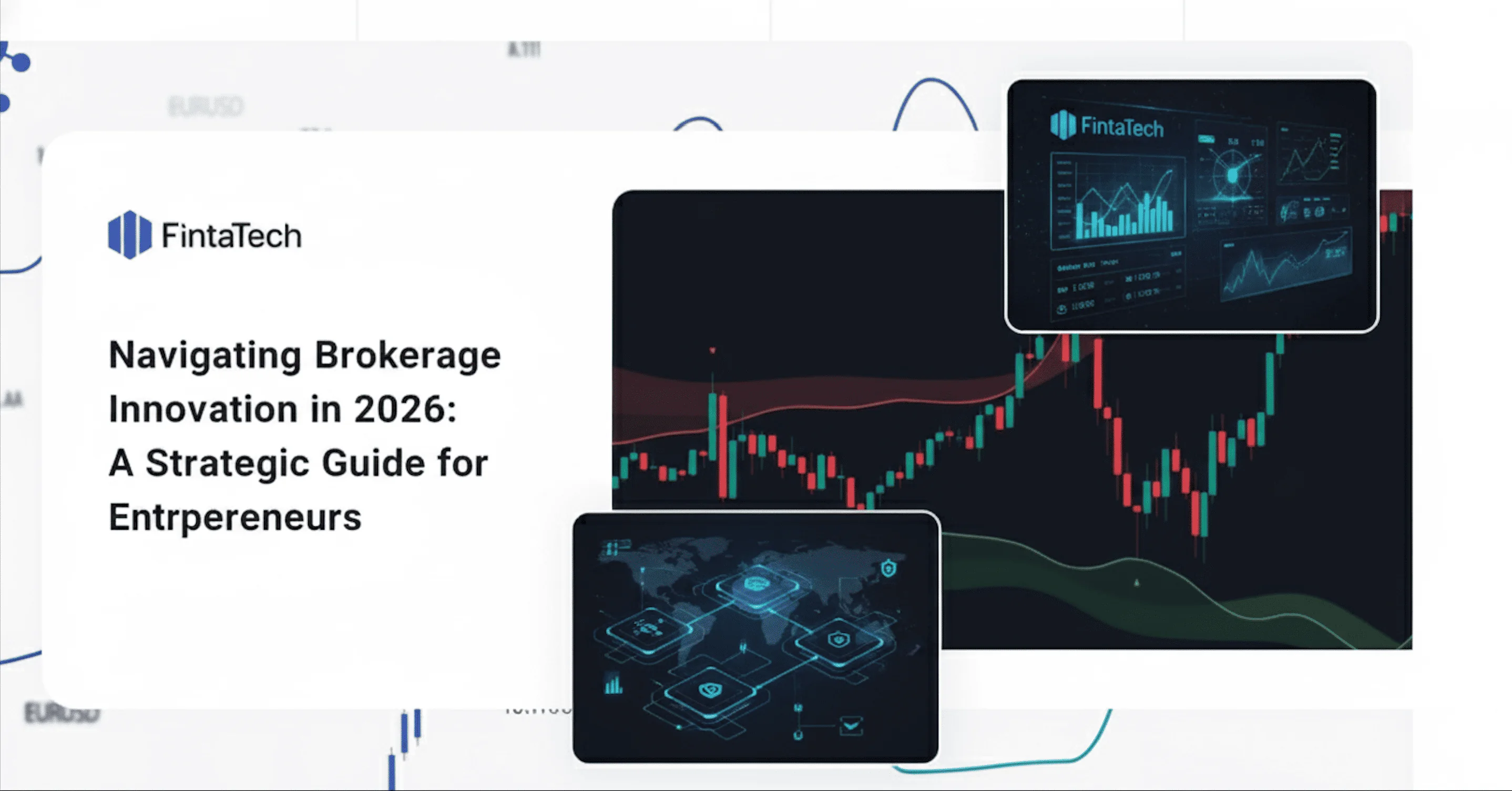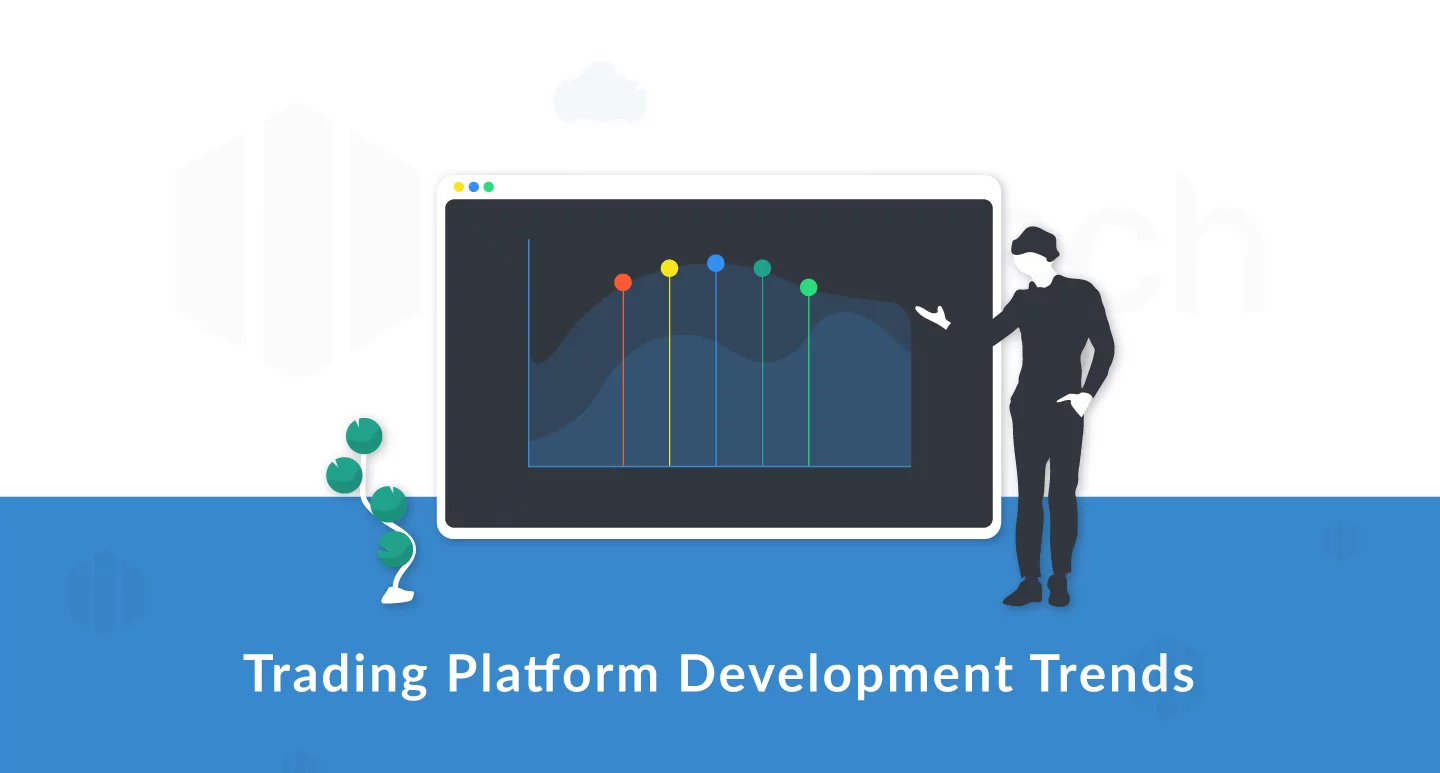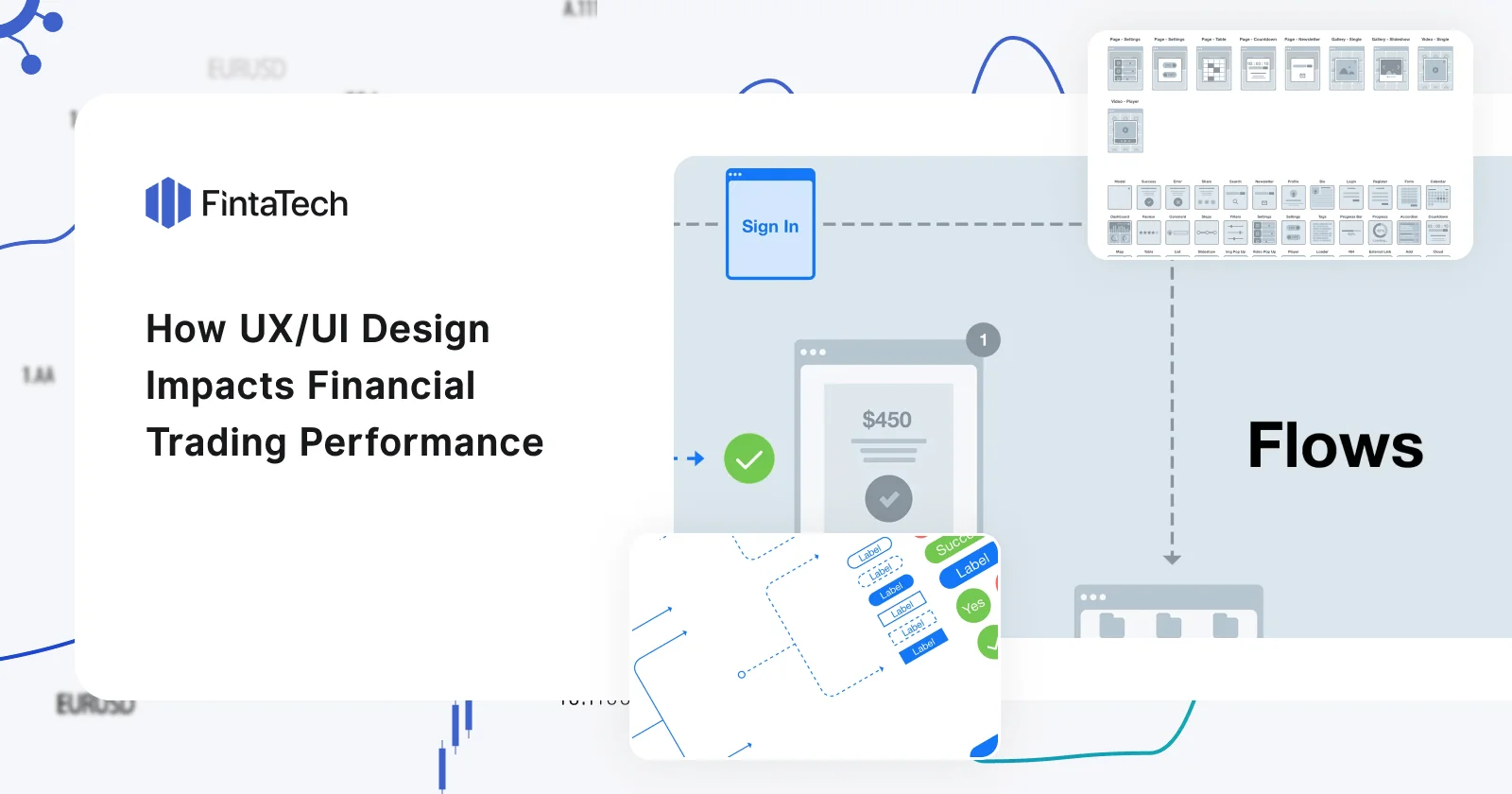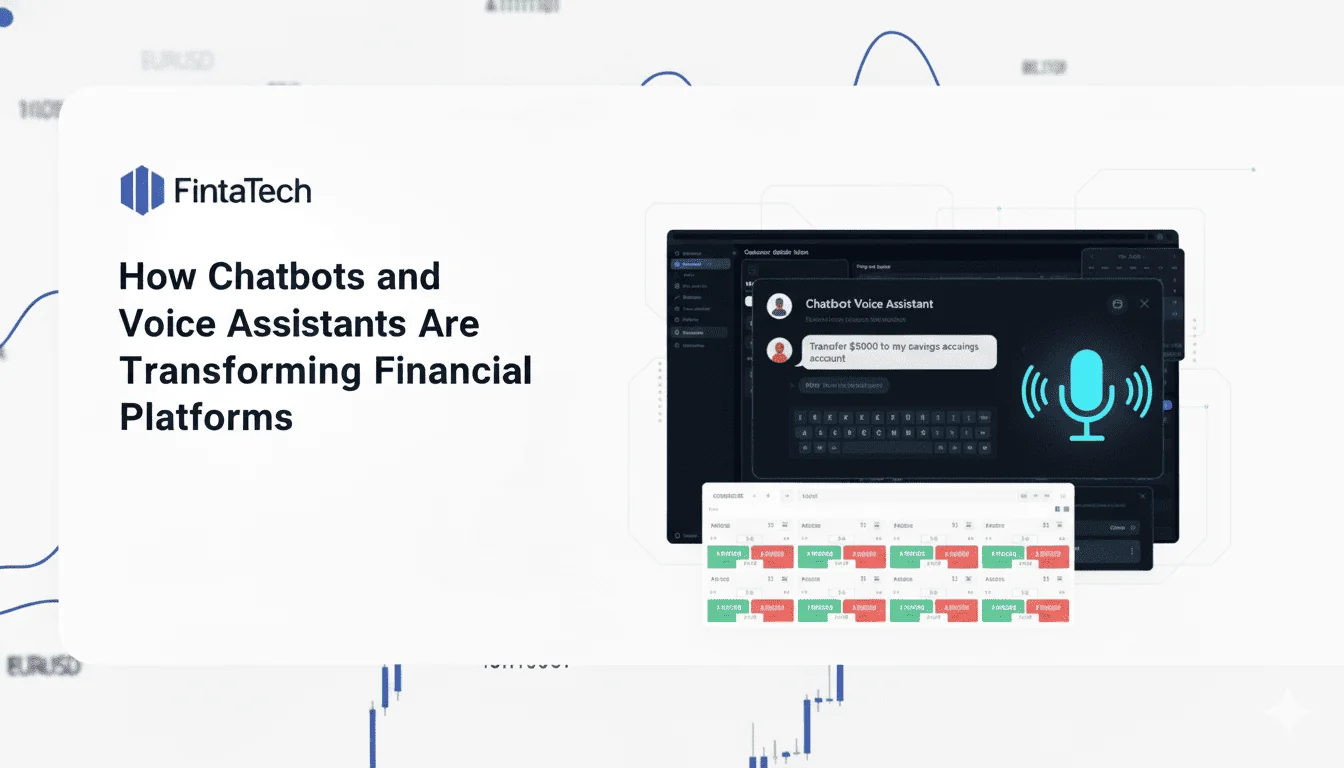The brokerage industry stands at a crossroads in 2026 — shaped by rapid technological innovation, evolving regulation, and changing investor behavior. Digital transformation has become a survival requirement, not a competitive advantage.
For entrepreneurs, this year marks both a challenge and an opportunity: the chance to build brokerages that are agile, AI-driven, and client-centric — the kind of platforms that will define the next decade of fintech.
This guide outlines the key trends, shifts, and strategies every entrepreneur and fintech founder should understand to stay ahead in 2026 and beyond.
The Brokerage Landscape in Transition
The definition of a brokerage has evolved dramatically. What was once a simple intermediary between investor and market has now become a multi-layered digital ecosystem.
Modern brokerages are technology companies first, financial intermediaries second. They combine trading, analytics, education, and community into seamless digital experiences that rival social media apps in usability and personalization.
The competition has expanded beyond traditional players — fintechs, neo-brokers, and even big tech firms are entering the market with embedded investment features. For new entrants, this means success depends on focus, differentiation, and speed to market.
Key Trends Shaping 2026
1. AI-Driven Brokerage Platforms
Artificial intelligence has moved from experimentation to core infrastructure.
In 2026, AI is transforming nearly every layer of brokerage operations:
– Personalized client insights – AI models track behavioral patterns and deliver hyper-targeted trading recommendations.
– Automated compliance and fraud detection – reducing human error and ensuring faster KYC/AML approvals.
– Smart order routing – optimizing trade execution to reduce slippage and improve performance.
– Conversational assistants – helping traders analyze portfolios, monitor risk, and learn new strategies.
Entrepreneurs must now treat AI integration not as a “nice-to-have,” but as a baseline expectation. Brokerages that lack automation risk being perceived as outdated.
2. Tokenization and the Rise of Digital Assets
Tokenization — converting real-world assets like stocks, bonds, and real estate into digital tokens — is reshaping market access.
By 2026, regulatory clarity in major regions (the EU, Singapore, UAE, and UK) has accelerated institutional adoption.
Tokenized assets allow:
– 24/7 trading of previously illiquid instruments;
– fractional ownership for smaller investors;
– faster settlement through blockchain infrastructure.
For entrepreneurs, tokenization opens the door to new product lines — from alternative asset marketplaces to hybrid trading ecosystems that merge traditional and digital finance.
3. Regulation as a Competitive Advantage
Regulation is tightening across the globe. While this increases complexity, it also rewards preparedness.
Investors now prefer brokers who are transparent about compliance, data protection, and governance.
RegTech (regulatory technology) tools are enabling automation in monitoring, reporting, and client verification.
Smart founders view regulation not as a barrier but as a trust multiplier — a differentiator that can elevate brand credibility and attract institutional clients.
4. The Mobile-First, Experience-Led Investor
The next generation of investors — Millennials and Gen Z — demand seamless, mobile-first platforms.
They expect the same smooth UX as in e-commerce or streaming apps: zero friction, instant onboarding, and intuitive interfaces.
Design trends for 2026 emphasize:
– biometric authentication and voice trading;
– real-time notifications and performance insights;
– gamified features (leaderboards, challenges, learning rewards);
– strong visual identity and emotional connection.
Brokers that invest in superior UX are rewarded with lower churn and stronger community engagement.
5 From Commissions to Ecosystems
Revenue models are shifting fast. Commission-free trading is now the standard, not the differentiator.
In its place, a multi-revenue ecosystem is emerging, including:
– Subscription tiers with advanced analytics, signals, and AI advisors;
– Payment for order flow (PFOF) and liquidity rebates;
– Margin lending and securities lending programs;
– Partnerships and embedded finance integrations with other fintechs.
Entrepreneurs must diversify early — the key is to build monetization into the user journey without compromising trust or transparency.
6. ESG and Values-Based Investing
Investors in 2026 are increasingly guided by ethics, impact, and sustainability.
Environmental, social, and governance (ESG) criteria are no longer niche filters — they are core investment drivers.
Brokerages that provide ESG screening tools, green portfolios, or impact-tracking dashboards appeal to younger demographics and institutional mandates alike.
The New Investor Mindset
Today’s investors want control, community, and confidence.
The classic “solo trader” image has been replaced by an ecosystem of interactive learning, social engagement, and shared insight.
Platforms that integrate community elements: copy trading, peer insights, live sessions, gamification, are capturing engagement and retention.
Education is becoming part of the brokerage experience: tutorials, simulated trading, and AI-powered “learn while you trade” modules drive loyalty and trust.
Entrepreneurs should think beyond transactions — the real value lies in nurturing investor relationships.
The Entrepreneur Roadmap: Building a Future-Proof Brokerage
- Define your niche.
Identify the investor segment you serve best — retail traders, wealth clients, institutions, or crypto enthusiasts. Precision beats scale in early stages. - Choose your tech foundation wisely.
Opt for modular, API-first architecture. Prioritize flexibility to integrate with payment systems, liquidity providers, and analytics tools. - Leverage AI and automation early.
Automate compliance, onboarding, and risk assessment. Use AI analytics to anticipate user needs and create stickiness. - Build with regulation in mind.
Work with compliance experts from day one. Transparent frameworks make fundraising and partnerships easier. - Focus on UX and education.
Your platform should not only enable trading — it should teach, guide, and inspire. Empower users to make better decisions, and they’ll stay longer. - Scale through partnerships.
White-label collaboration, fintech alliances, and embedded services can accelerate growth while keeping overheads low. - Measure, iterate, optimize.
Track engagement, conversion, and retention metrics religiously. Data is your best product development guide.
Challenges to Navigate
- Even with opportunity, 2026 brings real headwinds:
- Margin compression – as commission-free trading becomes universal.
- Cybersecurity threats – more automation means higher exposure.
- Regulatory volatility – especially in cross-border operations and crypto assets.
- Technology debt – legacy architecture slows innovation.
- Client retention pressure – acquisition costs are rising across digital channels.
Entrepreneurs must anticipate these realities and plan strategically — through strong partnerships, resilient tech stacks, and adaptive business models.
Key Takeaways for Entrepreneurs
- AI is non-negotiable. Integrate it across compliance, analytics, and customer engagement.
- Diversify revenue early. Move beyond commissions to subscription, lending, and data-driven monetization.
- Design for trust. Compliance, transparency, and security are brand assets, not checkboxes.
- Educate your users. Financial literacy and community interaction drive retention.
- Think globally, act locally. Build scalable architecture but adapt to regional regulations and culture.
Conclusion
By 2026, the brokerage industry will be defined by intelligence, speed, and trust.
Entrepreneurs who understand these pillars — and align technology with user experience will lead the next wave of innovation.
The winning formula is not simply being “digital,” but being adaptive: combining AI, human insight, and visionary execution to create platforms that empower investors worldwide.
Launch faster. Scale smarter. Innovate confidently.
Partner with Fintatech to build the technology foundation of tomorrow’s brokerage — where performance meets vision.






Twitter
Linkedin
Facebook